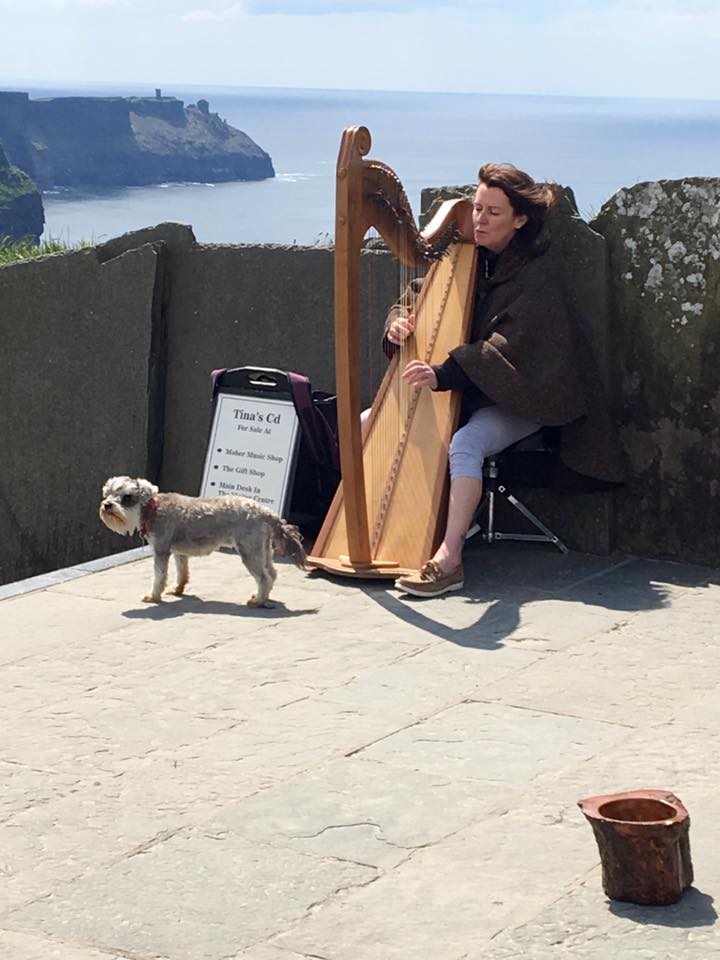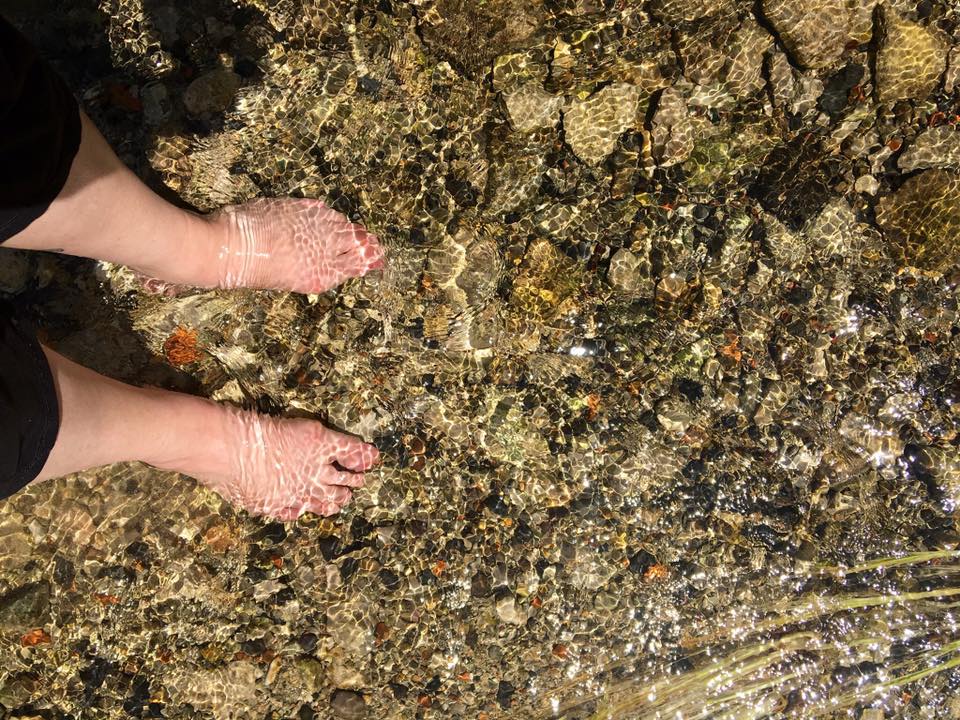
There’s an old joke that everyone is Irish on March 17. I’ll admit I don’t actually know—is this funny? Is green beer cultural misappropriation or just a festive way of ruining a good beer? At any rate, St. Patrick’s Day holds appeal for both the genetically Irish and the faux-Irish. As with any other observance, it can be fun to explore the traditions associated with St. Patrick’s Day.
Take, for example, the leprechaun, the wee redhead that protects pots of gold at the end of a rainbow. In Irish mythology, the leprechaun is a nasty little trickster, not an adorable Lucky CharmsTM mascot. In related news: only about ten percent of Irish folk are redheaded. Did you know that corned beef and cabbage are not an Irish tradition? The traditional St. Patrick’s Day meal eaten in Ireland is more likely to be lamb or ham. And although the shamrock is ubiquitous, the official symbol of Ireland, which appears on Irish coins, is the harp. In Patrick’s time the harp was associated with the music of the nobility.
Which brings me to Patrick himself. A fifth-century Christian missionary in Ireland, Patrick could also do with a little debunking. First of all, Patrick was not Irish but a Roman from Britain. While he is venerated as a saint, Patrick has never been formally canonized by the Roman Catholic Church. There were never any snakes in Ireland, so we can’t credit Patrick with driving them out. Traditions concerning Patrick have been invented and embellished for 1500 years, meaning that the Patrick we know is an amalgamation of history, religion, and culture.
But hey, don’t let me rain on your St. Patrick’s Day parade. I myself will be enjoying corned beef and wearin’ the green this weekend. Yet I am aware of an invitation in Patrick’s feast day to dive below the surface, to learn something, find meaning behind the clichés, a spiritual thin place.
A thin place is a moment where the veil between heaven and earth—between Spirit and flesh—seems to fade away. In a thin place, one has a sense that the Divine is nearer than usual. A thin place can be either physical, like a natural wonder, or it can be spiritual, like the connection felt while praying or listening to music. I am a liturgical Christian. I love using all my senses in prayer and worship. Church aromas, like beeswax and incense, fill me with joy. But I also feel God breathing down my neck when I listen to music, look at a Georgia O’Keeffe painting, smell a baby’s head, or look over an edge into a vast distance like at the Cliffs of Moher in the west of Ireland.
Less dramatic but equally wonderful are other kinds of thin places—that moment I realize my back isn’t hurting anymore, my gratitude that I have clean water readily available for drinking or handwashing, giving thanks to God for bread-baking and friendship. This is an embodied spirituality, and it is typical of Celtic spirituality.
Uncountable books have been written about Celtic spirituality. Writers like John O’Donohue, John Phillip Newell, Esther deWaal, and Mary Earle are wonderful guides. I am no expert—more of a dabbler—but I know that Celtic prayer (both ancient and modern) celebrates an embodied experience of God. No situation is too homely to invoke God’s supernatural presence and power, whether one is washing laundry, milking a cow, or traveling. Celtic Christian theology stresses that the created order is good and holy. God is near, while at the same time being incomprehensibly Other. What makes this so refreshing to me is that it contradicts much of bad inherited religious tradition. To many Christians, God is a kind of vengeful puppet master who demands the subjugation of humans, our bodies and hungers. (A lot of deplorable religious attitudes can be traced to the Synod of Whitby in 664. You should look it up.)
Of all the ways I experience God, I find music from the Celtic tradition especially hydrating for my soul. There is an effervescent imagination in Celtic music that permeates me, pulling back the veil from the thin places. I experience the Holy in Celtic music. The thinnest places I ever experience are revealed to me in music.
Allow me to offer a music primer. I listen to music to change my mood, or to double-down on the mood I’m in. Here is a sampling of Irish-Celtic music in several styles and moods. You’ll notice that none of these songs is ostensibly sacred. Nevertheless, I find each of them spiritually nourishing.
“Star of the County Down”
This old ballad is endlessly adaptable and can be found in versions from slow to frantic. It is one of my favorite tunes, here performed on the slow side by Margaret Brennan.
“There is a Time”
Modern Irish group Solas performs this perfect, not-too-fast and somewhat hypnotic tune with lyrics about life and nature.
“From Clare to Here”
Songs about Ireland are often unbearably poignant, as with this Ralph McTell number performed by Austin’s Nanci Griffith.
“Nancy Mulligan”
British singer-songwriter Ed Sheeran tells of Irish history of a more personal nature: the story of his grandparents, written for their wedding anniversary.
“Ripples in the Rockpools”
This modern Shaun Davey composition—written for singer Rita Connolly—is a history lesson. It tells the story of pirate-queen Gráinne Ní Mháille (aka Grace O’Malley, c.?1530 – c. 1603).

Let’s return to our friend Patrick and come full circle. Only two writings remain that can be attributed to Patrick. One of them, “St. Patrick’s Breastplate,” is a wonderful example of Celtic prayer: it glorifies God’s presence in the natural world and claims God’s presence and protection for the journey. An Episcopal Church glossary says the prayer “invokes the Trinity, angels, apostles, patriarchs, prophets, the powers of heaven and earth, and Christ to be present for protection in all times and situations of life.” Set to an Irish tune, St. Patrick’s Breastplate is a stirring, glorious piece of music, commonly sung in the Episcopal Church at ordinations.
I find the words to Patrick’s prayer endearingly current and empowering. In a world that seems to have lost its mind, I often feel afraid and vulnerable. Patrick reminds me that God is here: alive in the world and in me. As God’s beloved I myself have the authority to claim God’s protection. (“I bind unto myself to-day the strong Name of the Trinity, by invocation of the same, the Three in One and One in Three.”) I am reminded there is power in a story, and Christ’s story is empowering. (“I bind this day to me forever, by pow’r of faith, Christ’s incarnation; His baptism in Jordan river; His death on Cross for my salvation; His bursting from the spiced tomb, His riding up the heavenly way; His coming at the day of doom; I bind unto myself today.”)
My favorite part of the hymn feels like a mantra or an incantation:
Christ be with me, Christ within me, Christ behind me, Christ before me,
Christ beside me, Christ to win me, Christ to comfort and restore me,
Christ beneath me, Christ above me, Christ in quiet, Christ in danger,
Christ in hearts of all that love me, Christ in mouth of friend and stranger.
Patrick’s prayer is a statement of belief and trust, worthy of our own devotional prayer. You can read the whole prayer here and listen to it here. I commend it to you for your observance of Patrick’s Day.

4 Responses
Thank you, Cathy for the beautifully written essay on St. Patrick and Celtic Prayers.
If you haven’t read Thomas Cahill’s “How the Irish Saved Civilization”, I think that you would really enjoy it!
Love to you and David,
Dianne Kaderli
Cathy, Cathy, Cathy, your essay was in itself an example of the embodied presence about which you write so beautifully. I heard your voice and experienced your God-given Cathy-ness in what you wrote, in the way you wrote, and in your commending to readers those pieces of Irish-inspired music. One more thing—besides the fact that I loved your essay—is that, like you, my favorite part of St. Patrick’s Breastplate is the same as yours. Echoing Dianne Kaderli, love to you and David
Just so it’s been mentioned–when we played music in Sumners Hall in honor of St. Patrick’s Day, we played Si Bheag, Si Mhor by Turlough O’Carolan; Southwind, which is sometimes attributed to O’Carolan but I don’t believe it; Road to Lisdoonvarna/O’Keefe’s Slide; a couple of English tunes referencing Ireland in some way, such as Purcell’s Lilliburlero; and a couple of others, Celtic in orientation if not precisely Irish, like There’s Nae Luck Aboot the Hoose. It was fun.
That was March 22–the closest we could get to St. Patrick’s Day due to Spring Break etc.
Thanks for posting this comment Donna. So glad y’all were able to do that this year!